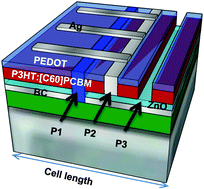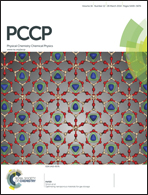Describing the light intensity dependence of polymer:fullerene solar cells using an adapted Shockley diode model
Abstract
Solar cells are generally optimised for operation under AM1.5 100 mW cm−2 conditions. This is also typically done for polymer solar cells. However, one of the entry markets for this emerging technology is portable electronics. For this market, the spectral shape and intensity of typical illumination conditions deviate considerably from the standard test conditions (AM1.5, 100 mW cm−2, at 25 °C). The performance of polymer solar cells is strongly dependent on the intensity and spectral shape of the light source. For this reason the cells should be optimised for the specific application. Here a theoretical model is presented that describes the light intensity dependence of P3HT:[C60]PCBM solar cells. It is based on the Shockley diode equation, combined with a metal–insulator–metal model. In this way the observed light intensity dependence of P3HT:[C60]PCBM solar cells can be described using a 1-diode model, allowing fast optimization of polymer solar cells and module design.


 Please wait while we load your content...
Please wait while we load your content...